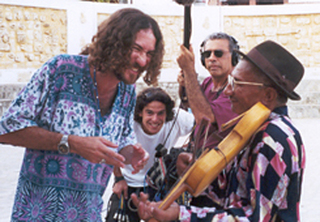The influence of the Portuguese Language in Ghana
Last year, when I arrived in Accra, I was surprised to hear some strange expressions in the English language, even though I’m a Brazilian and English is not my mother tongue. At the traffic lights I could hear people saying e.g. “dash me”. In the dictionary the meaning for the verb “dash” is “to shatter or smash”, which confused me. Searching for a solution, I arrived finally, to my surprise, at a logical explanation: it comes from the corrupted Portuguese “dás-me” (give me). The Portuguese were the first Europeans to arrive at the Gold Coast and build the Elmina Castle in 1482; they started an intensive and horrible slave trade. After that, Africa and Brazil built cultural and origin links, so that Brazil has nowadays, after Nigeria, the second biggest black population in the world. One of this links is the Tabom People, who came back to Accra in 1836, after they bought their own freedom in the Brazilian State of Bahia. Nowadays they have a Brazil House in James Town and roots to the Brazilian culture and language. Their own name Tabom comes from the Portuguese expression “Está bom” (“it’s ok” or “I’m fine”), because on their arrival, they could speak only Portuguese, so they greeted each other with “Como está?” (“How are you?”) to which the reply was “Está bom”, so that the people of Accra started to call them the Tabom People. All these facts can explain, why it is possible to find some influences of the Portuguese language in the everyday life of the Ghanaians. Another very common expression is “palaver” (gossip, to chat), that comes from “palavra” (word). “Panyar” or “panyarring” are terms from the Portuguese “apanhar” (to be beaten or to catch). In the standard English the word “fetish” comes from “feitiço”. “Sabola” is usual in Ewe and comes from the word “cebola” (onion); in Fanti people use the word “paano” for bread, what probably comes from our “pão”.
Family names of the Tabom People like Azumah, Nelson, Antônio or Faustino also show the Brazilian influence. Geographical names of Portuguese origin are very common in Ghana: Elmina (“A mina” – the mine), River Volta (“Rio Volta” – “River U-Turn”), Cape Three Points (“Cabo Três Pontas”), Cape Coast (“Cabo Corso” – in a free translation means “Cape of the Pirate”).
These few examples show us only a part of the influence of the Portuguese language in Ghana, however it is a sign that the own language changes and always displays the cultural, economic, political or social contacts that our people formerly made or is nowadays making. The Brazilian Portuguese also has a lot of influences of African languages, but this could be a theme for another article.
Marco Aurelio Schaumloeffel
Brazilian Lecturer in Ghana
P.S.: Portuguese is together with English and French one of the official languages of the ECOWAS.
Source: Marco


